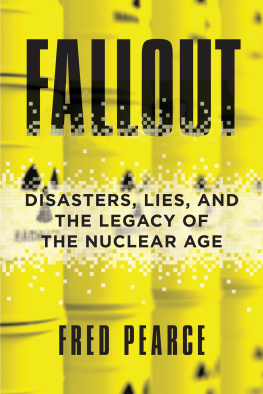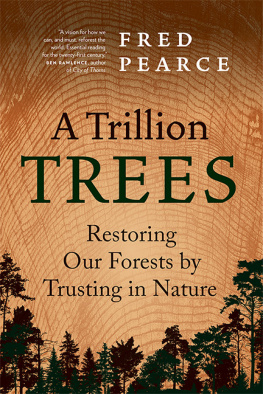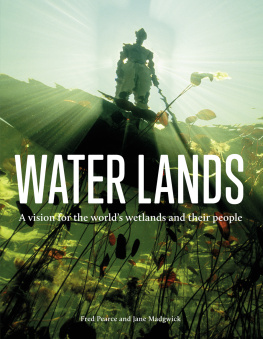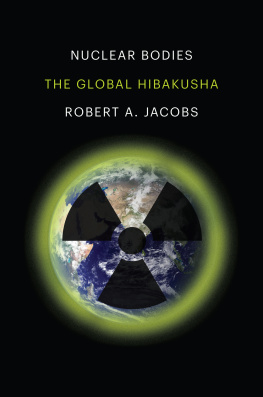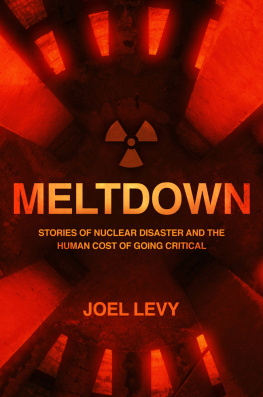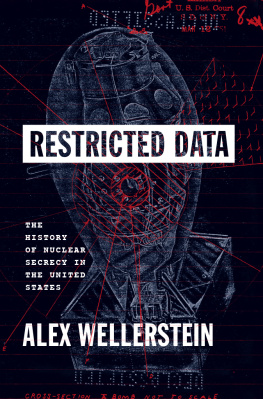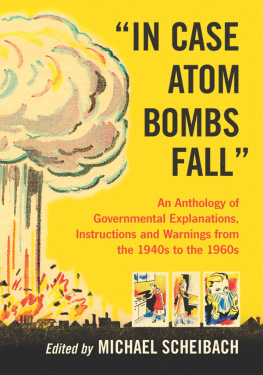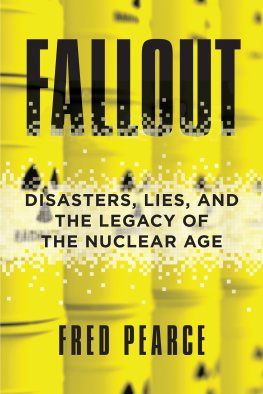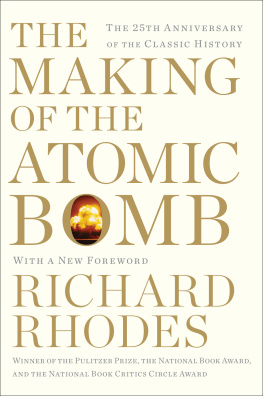Fred Pearce - Fallout: Disasters, Lies, and the Legacy of the Nuclear Age
Here you can read online Fred Pearce - Fallout: Disasters, Lies, and the Legacy of the Nuclear Age full text of the book (entire story) in english for free. Download pdf and epub, get meaning, cover and reviews about this ebook. year: 2018, publisher: Beacon Press, genre: Art. Description of the work, (preface) as well as reviews are available. Best literature library LitArk.com created for fans of good reading and offers a wide selection of genres:
Romance novel
Science fiction
Adventure
Detective
Science
History
Home and family
Prose
Art
Politics
Computer
Non-fiction
Religion
Business
Children
Humor
Choose a favorite category and find really read worthwhile books. Enjoy immersion in the world of imagination, feel the emotions of the characters or learn something new for yourself, make an fascinating discovery.
- Book:Fallout: Disasters, Lies, and the Legacy of the Nuclear Age
- Author:
- Publisher:Beacon Press
- Genre:
- Year:2018
- Rating:4 / 5
- Favourites:Add to favourites
- Your mark:
Fallout: Disasters, Lies, and the Legacy of the Nuclear Age: summary, description and annotation
We offer to read an annotation, description, summary or preface (depends on what the author of the book "Fallout: Disasters, Lies, and the Legacy of the Nuclear Age" wrote himself). If you haven't found the necessary information about the book — write in the comments, we will try to find it.
From Hiroshima to Chernobyl, Fukushima to the growing legacy of lethal radioactive waste, humanitys struggle to conquer atomic energy is rife with secrecy, deceit, human error, blatant disregard for life, short-sighted politics, and fear. Fallout is an eye-opening odyssey through the first eight decades of this struggle and the radioactive landscapes it has left behind. We are, he finds, forever torn between technological hubris and all-too-human terror about what we have created.
At first, Pearce reminds us, America loved the bomb. Las Vegas, only seventy miles from the Nevada site of some hundred atmospheric tests, crowned four Miss Atomic Bombs in 1950s. Later, communities downwind of these tests suffered high cancer rates. The fate of a group of Japanese fishermen, who suffered high radiation doses from the first hydrogen bomb test in Bikini atoll, was worse. The United States Atomic Energy Commission accused them of being Red spies and ignored requests from the doctors desperately trying to treat them.
Pearce moves on to explore the closed cities of the Soviet Union, where plutonium was refined and nuclear bombs tested throughout the 50s and 60s, and where the full extent of environmental and human damage is only now coming to light. Exploring the radioactive badlands created by nuclear accidents--not only the well-known examples of Chernobyl and Fukushima, but also the little known area around Satlykovo in the Russian Ural Mountains and the Windscale fire in the UK--Pearce describes the compulsive secrecy, deviousness, and lack of accountability that have persisted even as the technology has morphed from military to civilian uses.
Finally, Pearce turns to the toxic legacies of nuclear technology: the emerging dilemmas over handling its waste and decommissioning of the great radioactive structures of the nuclear age, and the fearful doublethink over the worlds growing stockpiles of plutonium, the most lethal and ubiquitous product of nuclear technologies.
For any reader who craves a clear-headed examination of the tangled relationship between a powerful technology and human politics, foibles, fears, and arrogance, Fallout is the definitive look at humanitys nuclear adventure.
Fred Pearce: author's other books
Who wrote Fallout: Disasters, Lies, and the Legacy of the Nuclear Age? Find out the surname, the name of the author of the book and a list of all author's works by series.

